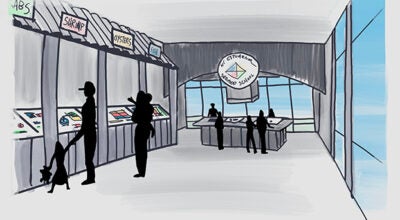AIDS on the rise
Published 7:03 pm Saturday, December 1, 2012
Cases of HIV increase in rural counties
Part two of a series
“It can affect any age, race, any person,” said Megan Price, health-education specialist with the Beaufort County Health Department.
She was speaking about HIV and AIDS, the virus and corresponding autoimmune disease that destroys the body’s ability to fight illness. Since the height of media focus on the disease in the mid-1980s, attention has shifted, though the spread of HIV/AIDS persists. The worldwide epidemic continues — especially in North Carolina.
At the end of 2010, 38,397 North Carolina residents had HIV. According to statistics, that number is growing.
North Carolina ranked ninth in the nation in new AIDS diagnoses in 2009; seventh in the nation for the percentage of all AIDS cases among blacks in 2007, according to studies by the North Carolina Department of Health and Human Resources.
Backing up Price’s statement are a wealth of statistics: cases of HIV/AIDS have been documented in infants to the elderly, though most infected fall into the 25- to 59-year-old age range.
Men represent 70 percent of HIV cases in North Carolina; women, 30 percent. White, black, Native American, Asian and Hispanic people have all been affected by the disease, but according to the numbers, the black population is most at risk — blacks make up 67 percent of known living HIV cases in the state.
The larger metropolitan areas of the state claim the greatest number of new diagnoses each year, with over 50 percent of new diagnoses in 2010 found in five of the state’s 100 counties: Mecklenburg, Wake, Durham, Guilford and Cumberland. But according to a 2011 study by the NCDHHS, new diagnoses in rural areas are climbing quickly — roughly 20 percent of the state’s living HIV cases in 2010 were diagnosed and reported from rural areas.
That same year, Edgecombe County had the highest three-year average HIV disease rate at 41 cases per 100,000 people; Wilson County, at 29 per 100,000, according to the 2011 N.C. Epidemiologic Profile for HIV/STD Prevention Care and Planning. Mecklenburg County, with the state’s largest population and most documented HIV/AIDS cases in North Carolina, ranked between the two, at 38.1 cases per 100,000 people.
While Edgecombe ranks first and Wilson fifth, Beaufort County rates 33rd of the 100 North Carolina counties.
Beaufort County rates of new diagnoses have varied through the years. As of Dec. 31, 2010, 184 cases existed in the county. In 2011, nine new cases were diagnosed. From January to June this year, three more, said Price.
According to the Centers for Disease Control, of the estimated 1 million Americans who have HIV, 20 percent don’t know it. Those 20 percent can unknowingly infect others.
Considering the state’s highest rate of new diagnoses in 2010 — adult/adolescent, black males (94 new cases per 100,000 people), twenty percent of which were aged 13 to 24 — the need for education, awareness and prevention is clear, according to health officials.
“It’s important to know your status,” said Melinda Moore, director of outreach education at Agape Clinic in Washington. “Get tested.”
HIV/STI (sexually transmitted infections) tests are offered free of charge by appointment at the Beaufort County Health Department, 1436 Highland Drive, Washington, 252-946-1902.





